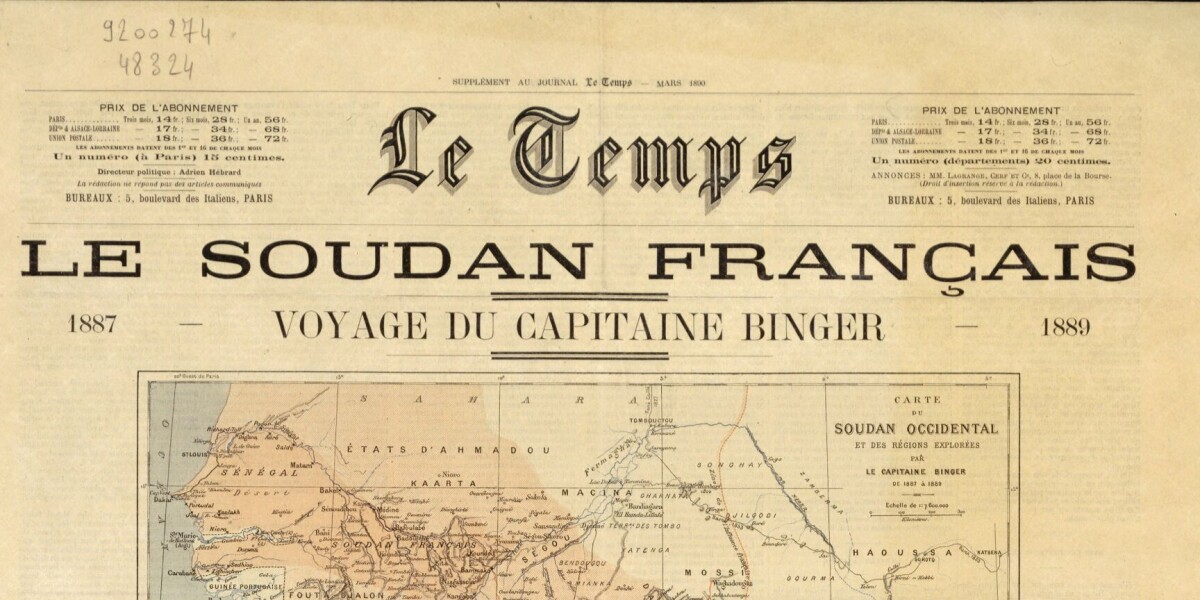
- Select a language for the TTS:
- UK English Female
- UK English Male
- US English Female
- US English Male
- Australian Female
- Australian Male
- Language selected: (auto detect) - EN
Play all audios:
MANY NEWSPAPERS WERE DEEMED TO HAVE COLLABORATED DURING WORLD WAR TWO An overwhelming majority of France’s best-read daily newspapers were founded in the wake of World War Two, leaving the
country’s journalism field with only a handful of them passing 100+ years of existence, unlike in the United States or the United Kingdom. The most emblematic examples include Le Monde
(1944), Ouest-France (1944), l’Equipe (1946), Le Parisien (1944), Sud Ouest (1944), Le Télégramme (1944) or Le Dauphiné Libéré (1945) to name a few. The reason lies in the fact that France,
unlike both the US and the UK, was occupied by German troops and newspapers were closed or heavily censored. 190 NEWSPAPERS PURGED When France was liberated, resistants and General De Gaulle
took a radical decision. “They considered that the press had collaborated with the enemy. Every newspaper that had kept printing activity 15 days after Germany took power of the country was
cancelled,” said Patrick Eveno, a media emeritus professor at Sorbonne University. That meant suppressing 190 of the 209 newspapers in circulation. The government requisitioned all
materials and printers and gave them to newly created newspapers. Le Temps became Le Monde, L’Auto became l’Equipe, Ouest-Eclair became Ouest-France, Le Petit Parisien became Le Parisien, La
Petite Gironde became Sud Ouest, Le Télégramme de Brest became Le Télégramme and so on. La Voix du Nord, Lille’s daily, was created clandestinely in 1941 by resistant soldiers, replacing
L’Echo du Nord. STRICT RULES This course of events differs from Belgium, Denmark or the Netherlands, Mr Eveno said. There, despite a deep cleansing of any journalists, staff and chiefs who
had collaborated with Nazi Germany, the newspapers were kept alive. “The French exception was to suppress newspapers and give their possessions to newfound dailies that very much resembled
the ones that were defunct. This is not really nationalising,” said Mr Eveno. The only newspapers who escaped that fate are conservative Le Figaro (1826), catholic La Croix (1883), satirical
Le Canard Enchaîné (1915), communist L’Humanité (1904) or local Lyon-based Le Progrès (1859) which were all found to have not collaborated. It remains forbidden to name a newspaper from any
name of the 190 newspapers that were eliminated. Read more: Go west: why the wealthy shun the east of town in France Le Matin de Paris (1977-1987), a newspaper to give Francois Mitterrand a
platform for the presidency, was initially meant to be called Le Matin until its owner was reminded that the name was among the 190 newspapers cancelled. Such intransigence found few
exceptions excepting Paris Match (1949), which replaced Match, a paper that continued activities during World War II under the name Le Match de la Guerre. The purge was mostly directed
toward daily newspapers, not weeklies or magazines, while titles founded after the war include women’s magazine Elle (1945), culture weekly Télérama (1947) and Le Nouvel Observateur (1950).







